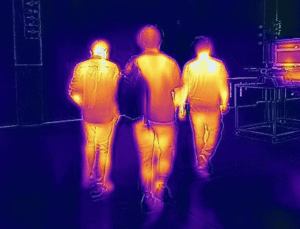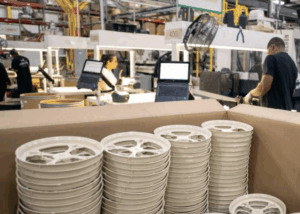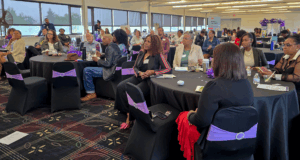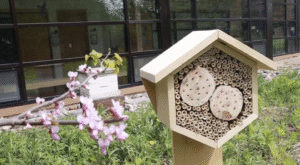
- Kim Kisner
- Community
- 09/05/2023
The Great Lakes Way to Connect People to Water, Nature, and Each Other
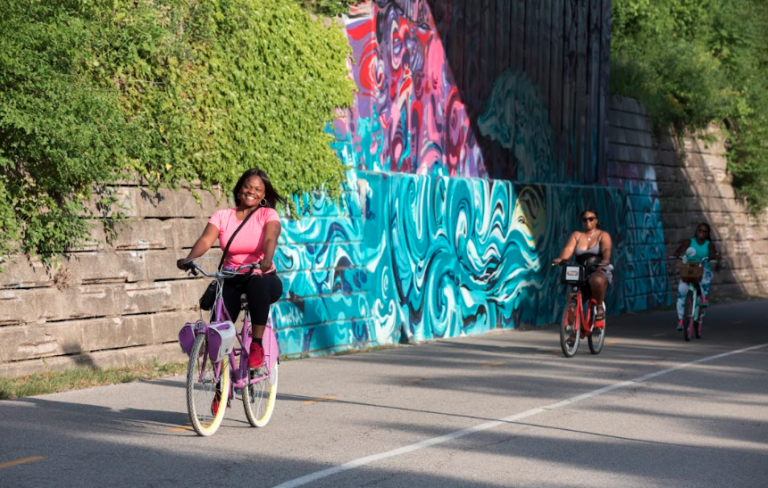
There’s the Appalachian Trail in the East, the Pacific Rim Trail in the West, and the Continental Divide Trail in the Rocky Mountains. Now, Southeast Michigan will have its own regional trail called The Great Lakes Way.
Over the past several years, the Community Foundation for Southeast Michigan (CFSEM) has convened a group of organizations, municipalities, and agencies to explore ways to build on the freshwater assets of the Southeast Michigan region. They created the vision for The Great Lakes Way.
Once complete, The Great Lakes Way will be an interconnected set of greenways and blueways (water trails) stretching from southern Lake Huron to western Lake Erie, passing through the counties of Monroe, Wayne, Macomb, and St. Clair. The Way incorporates about 160 miles of greenways and 156 miles of blueways along Southeast Michigan’s coastline.
SBN Detroit spoke with Greg Yankee, CFSEM director of arts and environment initiatives about the vision, the sustainability aspects, and how Southeast Michigan businesses can get involved.

Q: How did The Great Lakes Way get initiated under the Community Foundation for Southeast Michigan?
A: We’ve been seeing a great greenway movement happening throughout the region. Communities are making serious investments in fantastic projects but there are gaps between them. It led us to think about how to connect these trails and in general, how to give more people access to trails and greenways and waterways all across the region.
So, our mission is to connect people to the outdoors, to each other, and to water in a bigger way. This requires funding and community engagement and the actual work to make it happen, and all of that needs to occur in a certain order.
The Community Foundation of Southeast Michigan works across all of these communities and can facilitate the outreach, coordination, and funding so it makes sense for The Great Lakes Way to have this initiative with us.
We have a 35-member advisory committee at the heart of The Great Lakes Way project, providing us with information, guidance, and connections to critical resources. Committee members include representatives from the Michigan Department of Natural Resources, the Metroparks, Michigan Trails and Greenways Alliance, the National Park Service, as well as parks and recreation leaders from the communities all along the route.
Q: What solutions are you looking to provide with The Great Lakes Way?
A: We feel that there is a definite need to provide more opportunities to spend more time outdoors recreating and enjoying our waterways. For me, growing up in Trenton we had Elizabeth Park on the water, but trails were limited and not connected to neighboring communities.
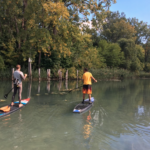
There is a huge opportunity to strengthen community connections and make it easy for more people to experience these incredible natural resources all along our waterways.
In short, there is no equitable access to water. In a lot of cases, geographical location determines whether you spend time recreating outdoors. But we are working to level the playing field and put these amenities within reach of as many Southeast Michigan communities as possible.
Q: What are the goals of The Great Lakes Way from a sustainability perspective?
A: Our goal is to help communities develop their public greenspaces while looking through a sustainability lens. Improving public access to water, building trails, and creating green spaces will also help grow our outdoor recreational economy – a win for the environment and the economy.
When residents and businesses witness these projects making the environment healthier, getting people outside, connecting people to places, and enhancing economic opportunities, sustainability becomes more a part of our lives. We want to foster a stronger relationship between people and the watersheds they call home.
Q: How does the Community Foundation for Southeast Michigan oversee the implementation of these sustainability practices?
A: The projects are planned and managed by the individual municipalities, of course, not us. But our team acts as a resource to help communities in the planning stages by connecting them to resources, experts, and service providers so that sustainability is not an afterthought.
We seek to help, not interfere. We are mindful of and in communication with each of the municipalities and communities developing these projects. So, if, for example, Clinton Township is putting in a kayak launch and Trenton wants to do the same, we can connect the two communities to learn from each other and share resources. We do a lot of that. We value being an ally and our goal is helping and facilitating, not managing a community’s projects.
Q: We hear a lot about greenways but not blueways. What is the vision for blueways?
A: Again, although I grew up in Trenton, I did not consider myself to be living on the water. That’s because the area along the water was an industrial corridor and often impossible to access for recreation. We have these remarkable rivers and
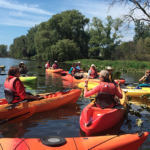
lakes, but traditionally it’s only been where factories go. We want to help revitalize former industrial spaces where appropriate and open them up for public recreation and enjoyment of the water.
Combining greenways and blueways will be a huge victory for everyone. The defining geographic characteristic of Southeast Michigan is our waterways, and to make a shift toward people enjoying them for recreation, nature appreciation, and gathering places is exciting. This is what creating better access to blueways will provide.
Q: How can The Great Lakes Way impact the economy in Southeast Michigan?
A: We commissioned a study on the economic impact of The Great Lakes Way. The study shows, all told and over time, that the total economic impact of The Great Lakes Way is in the billions of dollars.
Q: How will The Great Lakes Way impact businesses in Southeast Michigan?
A: The outdoor recreation businesses will be positively impacted, no doubt. Businesses and other points of interest located along the Way will benefit from people who stop for lunch, coffee, shopping, or to check out a historical
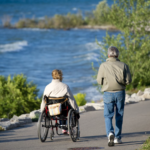
landmark.
We strongly believe that employers now recognize the value that outdoor recreation and waterfront access have for employees and that they benefit by promoting our recreation resources when recruiting employees and retaining them.
Two of our first funders were General Motors and DTE, and they gave us valuable insights on how to maximize the value of our natural resources for employees and residents.
Q: What are other benefits of The Great Lakes Way?
A: The health benefits of spending time outdoors and being active are well known. Today, many residents have to drive to spend time on the water. I look forward to people being able to step outside their doors and use trails to walk or bike to get there. They can more easily go for walks at lunch or take a walking meeting outdoors with colleagues, for instance.
There are also a lot of historical and cultural assets along our waterways. I had a friend from Denver who spent a lot of time on our riverwalk learning about the Underground Railroad and the role the Detroit River and community played. Once we make it easier for people to figure out how they can connect to historical sites, waterways, and the outdoors in general, they will.
Q: How can Southeast Michigan businesses get involved?
A: Connect with us. Be aware of the projects and their impacts. Be thinking about – as projects come up in your area – how you can support, possibly sponsor them or provide employees as volunteer helpers on the projects, which help employees recognize the importance of the investment in outdoor spaces.
By reaching out to us and getting involved as we talk to stakeholders and decision-makers in the communities and legislators in Washington D.C., we can be an ally for the business sector for sure.
Be sure to subscribe to our newsletter for regular updates on sustainable business practices in and around Detroit.
Kim Kisner
- All
- Business
- Community
- Education
- Events
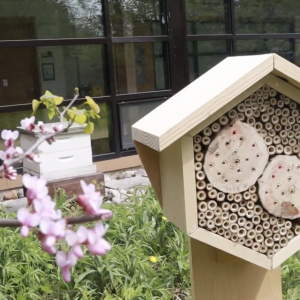
Pollinators are essential to Michigan’s ecosystems, food systems, and long-term environmental resilience — yet they face increasing threats from habitat loss, pesticides, disease, and climate change. As Southeast Michigan looks for scalable, science-based approaches to ecological stewardship, the University of Michigan-Dearborn has emerged as a voice in pollinator conservation, sustainability, and community education. SBN Detroit interviewed Dr. David Susko, Associate Professor of Biology and Chair of Biology in...
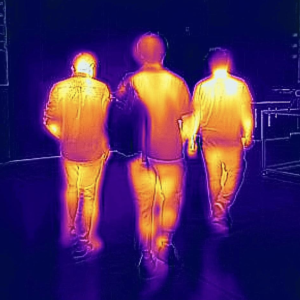
ThermoVerse is a Detroit-based urban innovation startup founded by engineer and researcher Shantonio Birch. The company’s work centers on advanced thermal energy storage and people-focused building technologies that reduce waste, stabilize indoor environments, and free up electrical capacity. SBN Detroit interviewed Birch about the future of grid resiliency, energy equity, and why Southeast Michigan is positioned to lead in next-generation smart city innovation. Q: What is the impetus...
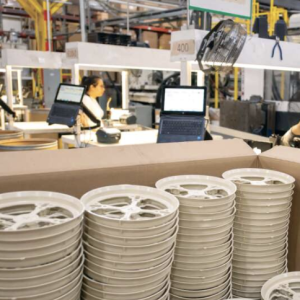
In the manufacturing world, sustainability is increasingly defined not just by recycling, but by what kind of recycling. For PolyFlex Products, based in Farmington Hills and part of Nefab Group, the future lies in creating closed-loop systems where materials are reused for equal or higher-value purposes — not simply “downcycled” into lower-grade goods. PolyFlex, which designs and manufactures reusable packaging and material handling solutions for the automotive and...


